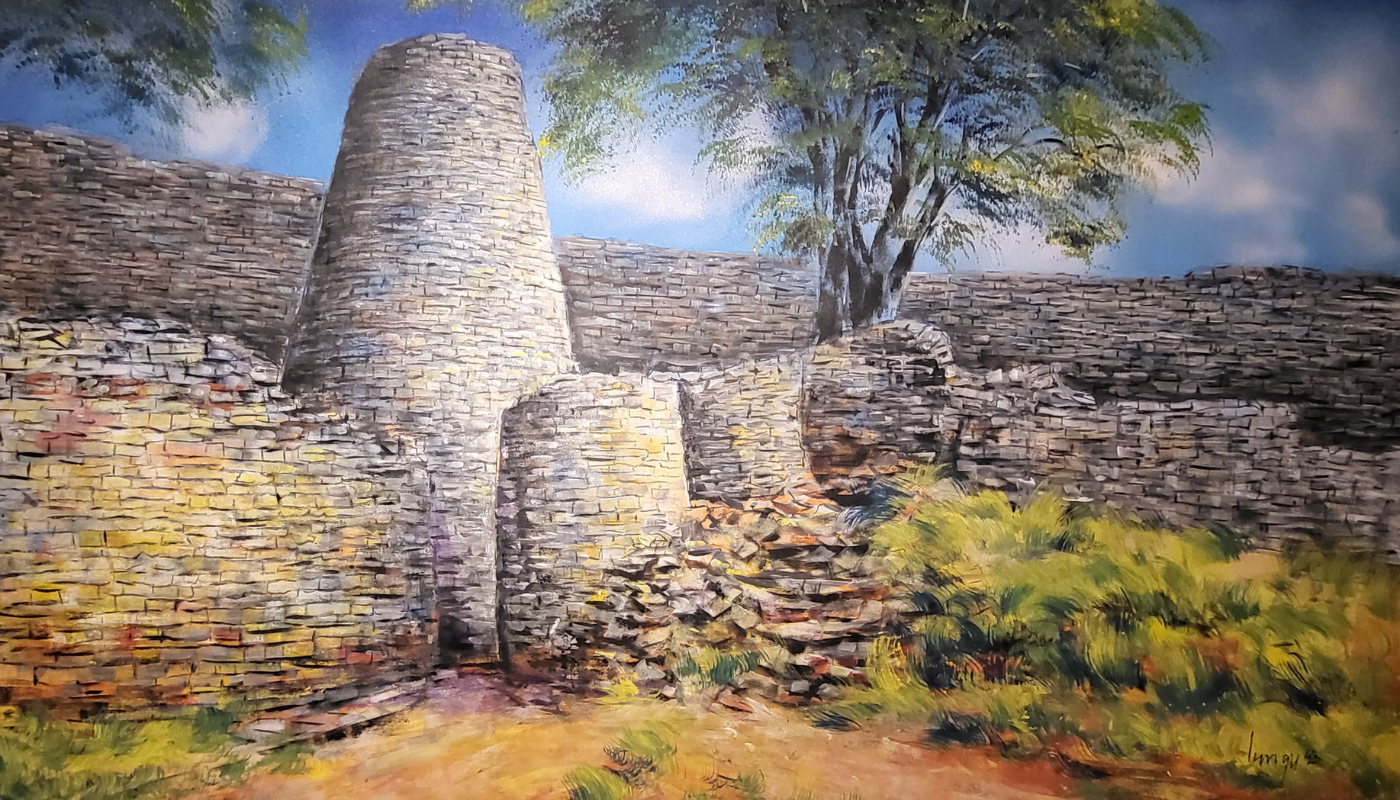The sculptors have their ideas of what they would like to carve!
Does the form of the stone inspire them?
Where do the stones come from?
The stones are all local stones from quaries. Depending on the type of stone, the sculpturor must often travel quite far to find the stones and bring them back to their place of work. The sculptors have ideas of what they would like to sculpt from the beginning. The form of the stones then inspire the final result which might not be what they originally set out to carve. Also famous places, history, beliefs and culture are used to influence what the sculptor would like to make.
One of the examples for instance are the chess sets that sculptors made since early in the last century. It could be said that the original idea of the chess players and design came from the early dwellers of ""Great Zimbabwe"" the King and Queen, the bishop and the figurine of the jumper seems to be influenced by the period of ""Great Zimbabwe"" as are the soldiers.
Especially when considering the castle which seems to be based on the famous tower at ""Great Zimbabwe"".
(Painting by Barry Lungu)
Another is this shoe which we found which looks exactly like a discarded shoe left at the road side.

The carving is done manually, mainly with a chisel and hammer. It is difficult to believe that all the work is done manually with very simple tools as the results are unbelievable.
The detail that is carved, the straight lines that are achieved, the roundness, the hollowing out of areas all only with simple tools.
We should not forget that the large pieces are extremely heavy and very hard to transport.
The below Rhino weighs in at around 120 kgs. Someone had to move it, carve it, polish it and transport it.
Another factor that should not be forgotten is that the pieces can break. If we consider the detail put into such a sculpture, how easy it would be to break parts when sculpting.
After finishing the piece, the stones are normally polished. Sometimes the sculptor will leave the piece in its original state to achieve a contrast. Other times he wil play with the stone, polishing a part and leaving other parts unpolished. Normally every sculpture is made of one Stone only.
An excellent example is the above sculpture from Sam Kuve (Samson Kuvhenguwa) - The top part is a stone which is partly brown in colour - this has been polished to show the colours. It has been hollowed out and inside the hollow part, the stone has remained its orignal colour.
Then there is a long stem which has also been left unpolished. The hair of the man, is also unpolished as are his clothes and part of the bowl at his feet. The rest has been highly polished. Here Sam shows his unbelievable talent - he combines hollowing, rounding, straight lines in a magnificent piece that stands 120cm high. It also weighs about 100 kgs and breaks you back every time you want to move it.
So how do the sculptors polish the stones?
The sculptor will heat the stone up to about 35 degrees. Once the piece is warm he will apply a plain wax. By rubbing this on, the colour changes from grey to black for instance when black serpentine is carved. There is, however, polishing and polishing. The better the artist the more eyecatching is the polished surface. It takes a lot of time to polish and to reach the required colour. Then dont forget the large pieces are heavy and bulky. It is not easy to heat them and then polish them. Heating is done mainly over a fire.


